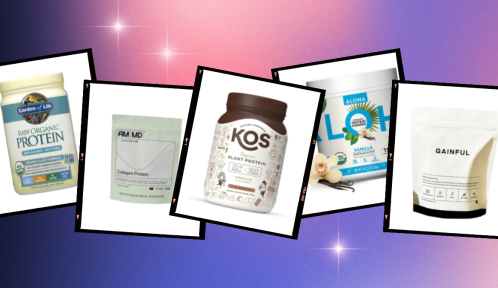Our editors independently select these products. Making a purchase through our links may earn Well+Good a commission
There’s a variety of ways that the human body communicates that something isn’t quite right—such as prolonged muscle soreness, burning pain, or even achy joints. While not always a cause for concern, sore joints could indicate a sign of inflammation or arthritis, according to Sydney Lappe, MS, RDN, a St. Louis, Missouri-based registered dietitian at bistroMD. A combination of stretching, physical activity, and cold compression can work wonders, but if you’re looking to reduce inflammation from the inside out, snacks for achey joints has got you covered. (If you’re experiencing prolonged inflammation and/or pain, we recommend that you make an appointment with your doctor or healthcare provider.)
Experts in This Article
registered dietitian at MyNetDiary
registered dietitian nutritionist at RET Physical Therapy and Healthcare Group and the owner of Fuel Performance Nutrition
What ingredients to look for in snacks for achy joints
The best foods to consume for achy joints have antioxidants, omega-3 fatty acids, and fiber—all of which “can help lower inflammation in the body and associated arthritis symptoms,” says Lappe. When looking for snacks, seek out fish, flax seeds, and walnuts, which are rich in omega-3 fatty acids as well as fiber-dense foods like whole grains, fruits, and vegetables, Amy Brownstein, MS, RDN, a Bay area-based dietitian, tells Well+Good. Watch out for overly-processed foods containing high amounts of sugar, flours, oils, and salt. Per Lappe, these ingredients can further exacerbate inflammation.
We spoke with several registered dietitian nutritionists about what ingredients to look for and to learn about their snack recommendations for creaks and aches. Check out these 11 snacks that will kick inflamed joints to the curb. Bonus: they’re all available on Amazon.
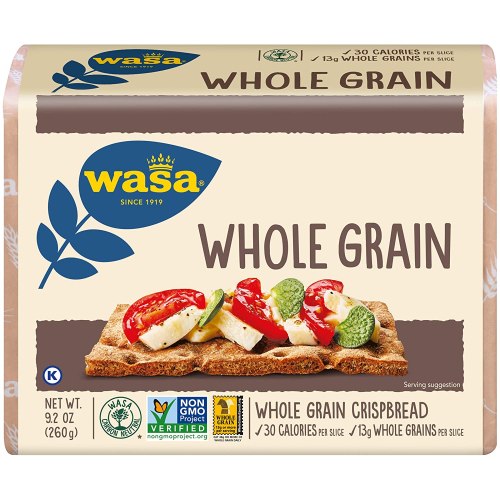
Wasa, Whole Grain Crispbread — $8.00
Wasa’s Whole Grain Crispbread offers “fiber, B vitamins, and other anti-inflammatory nutrients to protect from joint pain,” says Lappe. Per serving, these crunchy crackers serve up two grams of fiber to ward off inflammation (snap, crackle, and poppy knees, no more).
Fiber: 2 g/serving
Protein: 1 g/serving
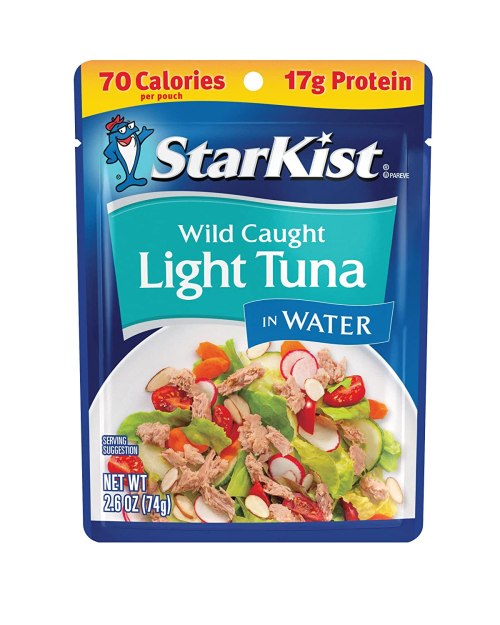
Starkist, Wild Caught Light Tuna (Pack of 12) — $22.00
Not only does one pouch of Starkist contain a whopping 17 grams of protein, the tuna-filled pouch is rich in omega-3 fatty acids, “a type of healthy fat that can lower inflammation in the body,” explains Lappe. When choosing tuna, Lappe recommends opting for water-based tuna versus oil-based tuna, which may contain more sodium. Pair with crackers or throw into your salad for an anti-inflammatory bite.
Protein: 17 g/serving

Brad's, Crunchy Kale — $11.00
For a nutrient-rich veggie snack, Lappe’s go-to is Brad’s Crunchy Kale. These “kale chips are a satisfying way to sneak in an anti-inflammatory veggie serving or two,” she says. Two grams of fiber, four grams of protein, and 90 calories per serving—these crunchy bites will give you the energy you need to go about your day.
Fiber: 2 g/serving
Protein: 4 g/serving

Nature's Eats, Walnuts — $8.00
“Unsalted walnuts contain omega-3 fatty acids, which can help reduce inflammation and may even protect joints,” says Brownstein. A handful of these will get you two grams of fiber and four grams of protein per serving. Add these walnuts to salad or soup to spruce up your meals. Or just snack on them on their own!
Fiber: 2 g/serving
Protein: 4 g/serving

Brami, Italian Snacking Lupini Beans (Pack of 8) — $15.00
Recommended by Brownstein, these Brami Lupini Beans are a great snack for those who have “bean” thinking about their health. Made of good-for-you ingredients like Lupini beans (one of the stars of our 2023 Wellness Trends predictions!), water, and sea salt, these Lupini beans are a great source of fiber and protein. Anti-inflammatory boost, here we come!
Fiber: 3 g/serving
Protein: 4 g/serving

Ziba, Sun-Dried Figs (Pack of 6) — $13.00
Got a sweet tooth? Try Ziba’s Sun-Dried Figs. We love that the only ingredient is fig, offering “a great source of calcium—which supports and strengthens bones,” says Jessica M. Kelly, RDN, LDN, a Pennsylvania-based owner and registered dietitian nutritionist at Nutrition That Heals, LLC. When it comes to servings, you’ll receive nine grams of fiber and two grams of protein for a satisfying nom.
Fiber: 9 g/serving
Protein: 2 g/serving
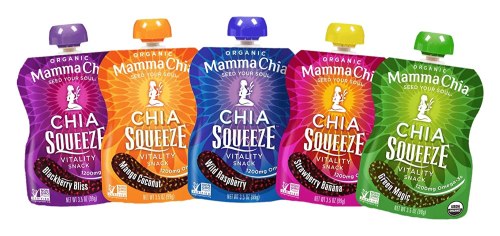
Mamma Chia, Squeeze Vitality Pack (Pack of 10) — $22.00
Made from fruits, vegetables, and chia seeds, these fruity pouches offer a healthy dose (1,200 mg) of anti-inflammatory omega-3s, minus the added sugar, says Kelly. Packaged in squeezable pouches, Mamma Chia’s Squeeze Vitality Pack are good for on-the-go and come in five delicious flavors: Wild Raspberry, Strawberry Banana, Mango Coconut, Green Magic, and Blackberry Bliss.
Fiber: 3 g/serving
Protein: 2 g/serving
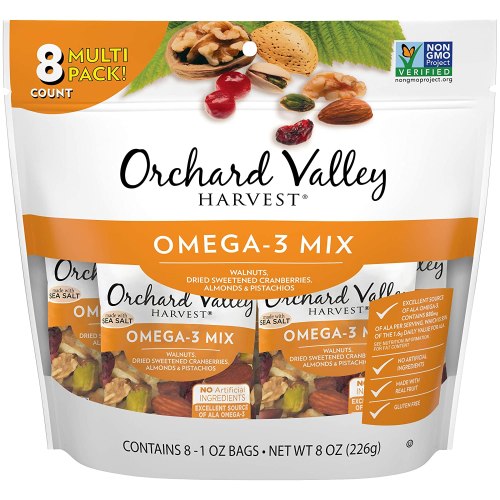
Orchard Valley Harvest, Omega-3 Mix — $7.00
Savory and sweet, this mix contains walnuts, pistachios, dried cranberries, and almonds. The real nuts and dried fruit provide alpha linoleic acid, which offers a good source of anti-inflammatory omega-3, according to Kelly. Each serving clocks in three grams of fiber and protein (each), so you can get an anti-inflammatory bite that’s both tasty and filling.
Fiber: 3 g/serving
Protein: 3 g/serving

That's It, Fig Fruit Bar (Pack of 12) — $22.00
Recommended by Kelly, this bar contains 70 calories, 4 grams of fiber, and 1 gram of protein per serving to support a healthy gut and combat inflammation. Made of fig and probiotics, this fig fruit bar will really have you saying “that’s it?”
Fiber: 4 g/serving
Protein: 1 g/serving
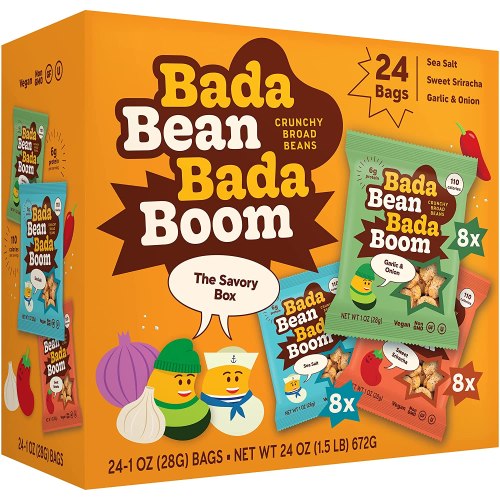
Enlightened, Bada Bean Bada Boom Savory Box (Pack of 24) — $23.00
Laura Simmons, MS, RDN, CD, a registered dietitian at RET Physical Therapy and Healthcare Specialists based in Washington state, spilled the beans about this savory snack. In this box, you’ll find no shortage of tasty and crunchy beans, from sweet sriracha, garlic and onion, and sea salt (yum). Each bite contains four grams of fiber and six grams of protein to help you build muscle and combat inflammation. These snacks are the real deal.
Fiber: 4 g/serving
Protein: 6 g/serving
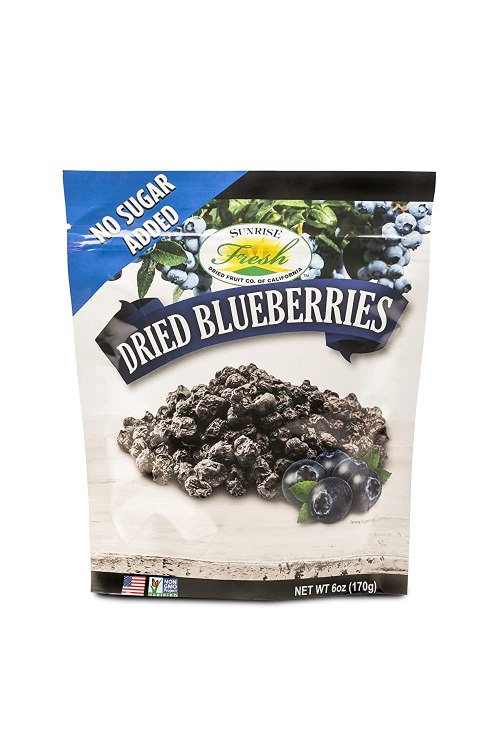
Sunrise, Dried California Blueberries — $10.00
Tasty, long-lasting, and rich in antioxidants—you can’t go wrong with dried California blueberries. These are “a great option to pair with unsalted mixed nuts on the go or throwing in a bowl with some popcorn,” says Simmons. Plus, they have a longer shelf life!
Fiber: 4 g/serving
Protein: 2 g/serving
Sign up for the Well+Good SHOP Newsletter
Get exclusive deals on wellness, beauty, fitness, and food products that have been hand-picked by our editors.
Got it, you've been added to our email list.



